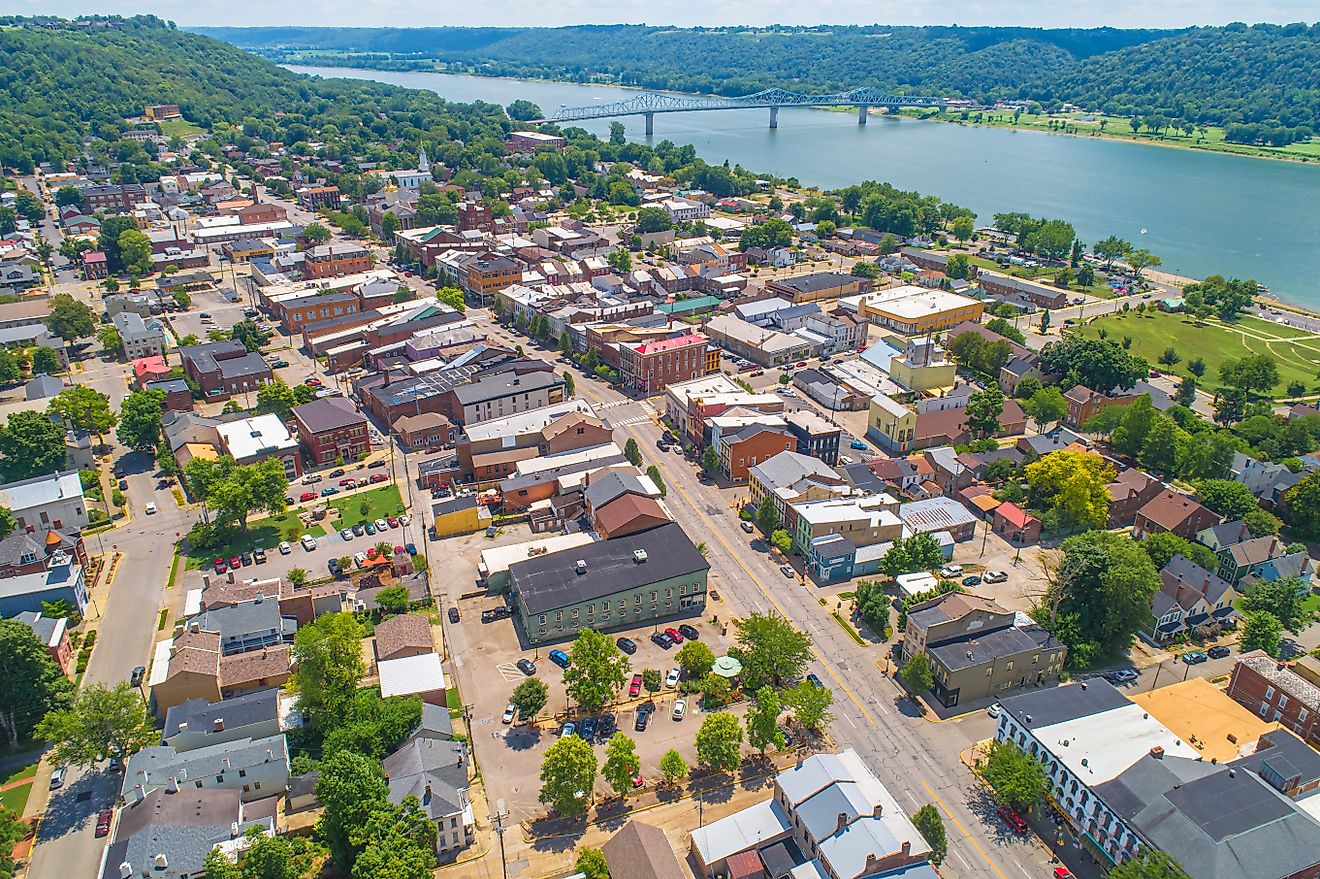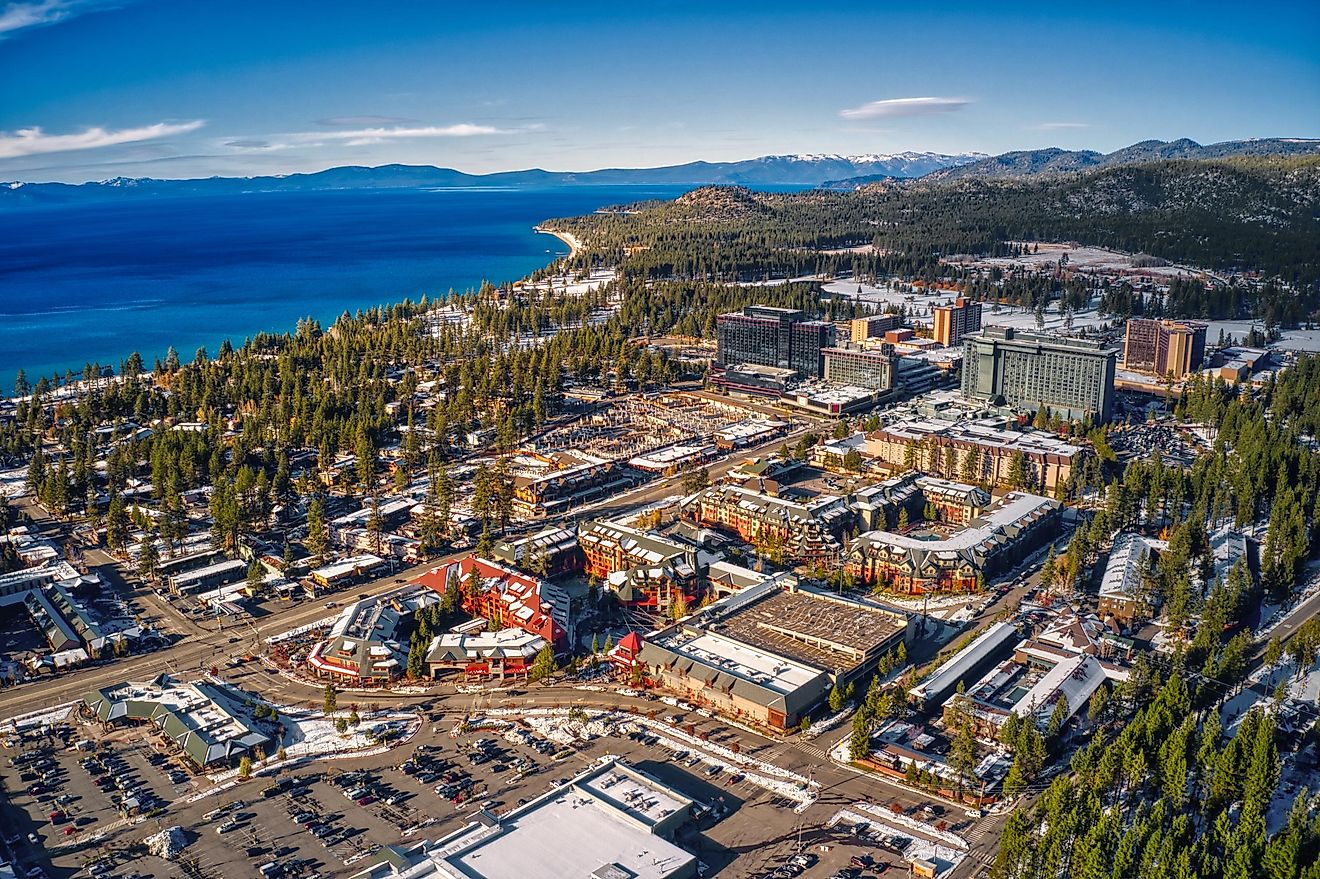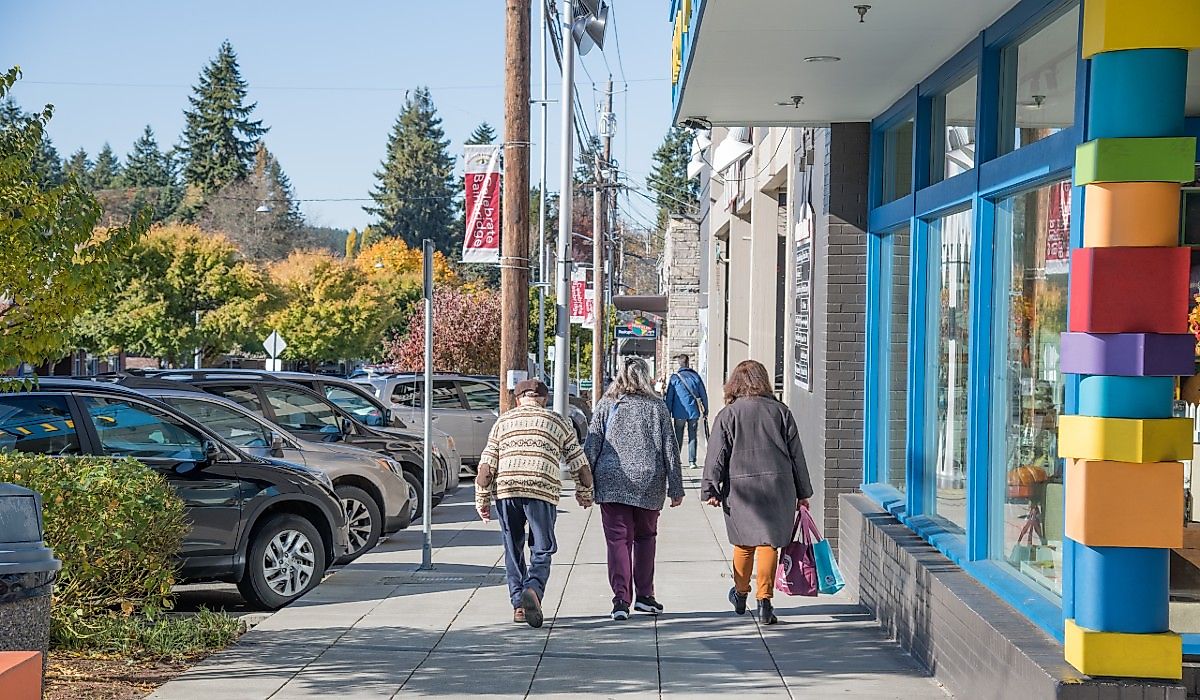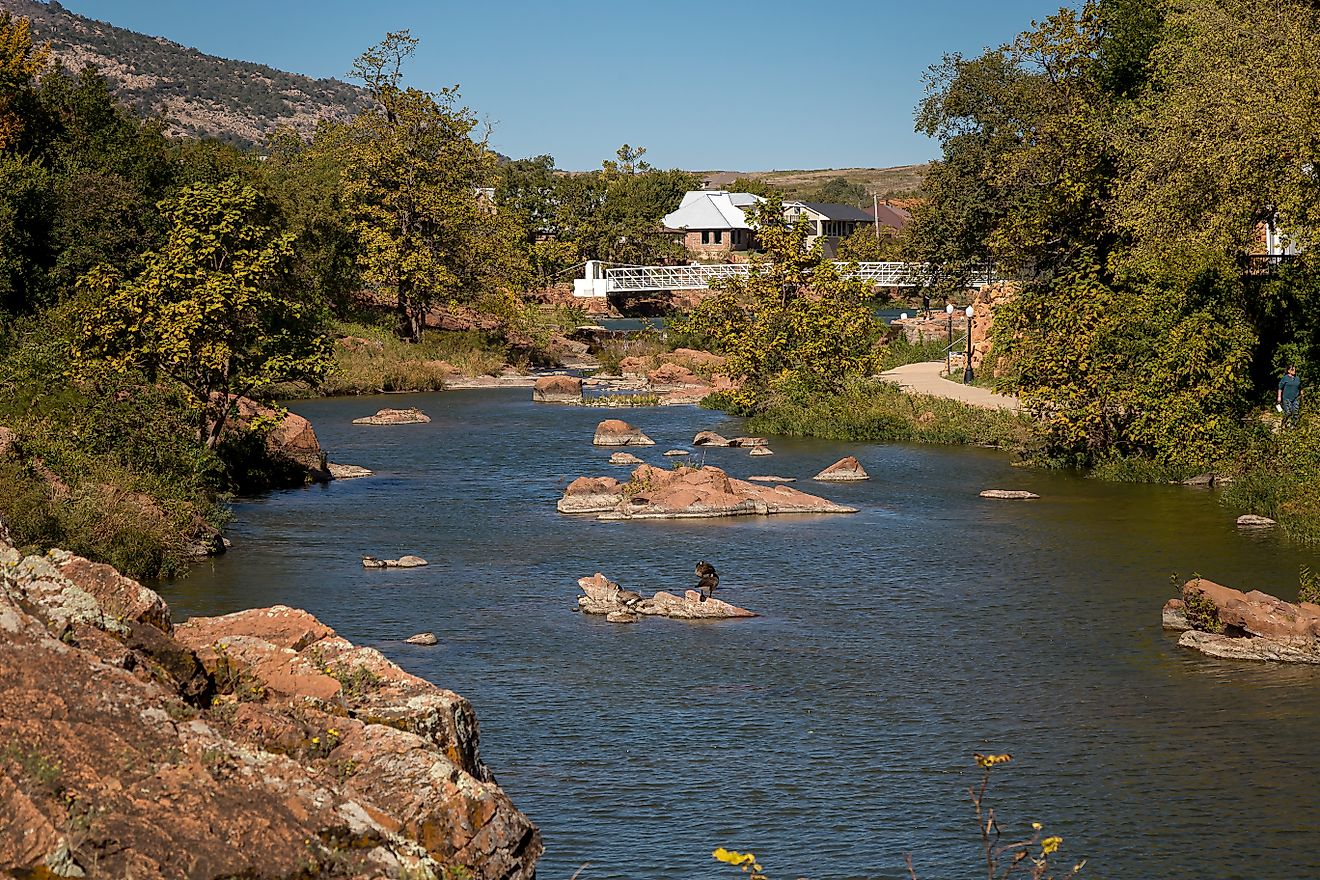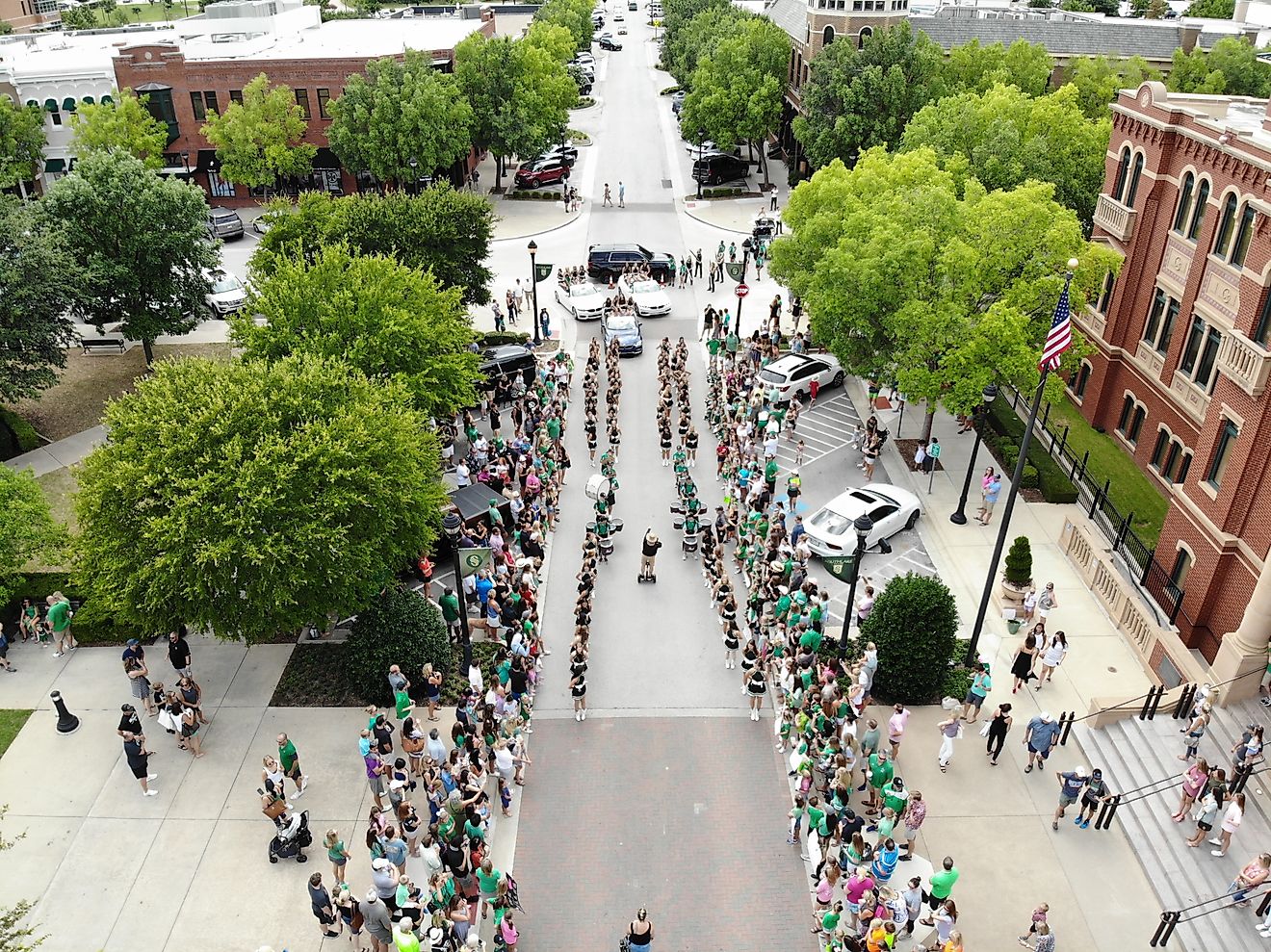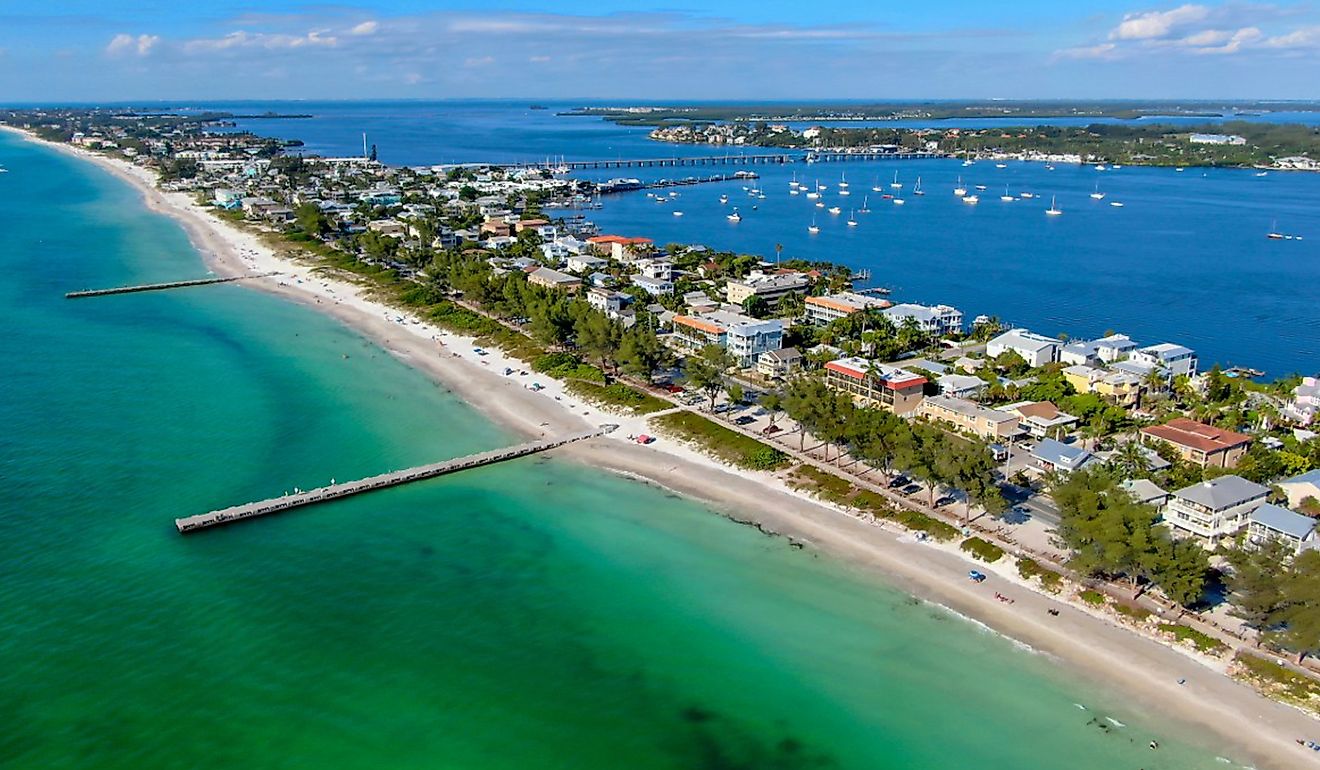
11 Most Comfortable Ohio Towns For Seniors For 2025
For 2025, we've built an Ohio "comfort ledger" that favors towns with a civic core that still works, and squares, and main streets where you can sit, read, and recognize faces by week two. We also sought out quiet cultural anchors, bookshops, and historical rooms, so that a Tuesday in February feels as lively as a Saturday in June.
The result spans Ohio’s three small-town dialects: Western Reserve greens, canal and river roots, and college steadiness, with rail-trail hubs and arboretum towns rounding out the list. None demands reinvention to retire well; each already runs on routine. Benches are placed where the view matters, traffic calms before it crowds, and the day is arranged in short, walkable chapters. Here are 11 Ohio towns where comfort is built into the layout, and where a good life fits on a single square mile without sacrificing anything.
Granville
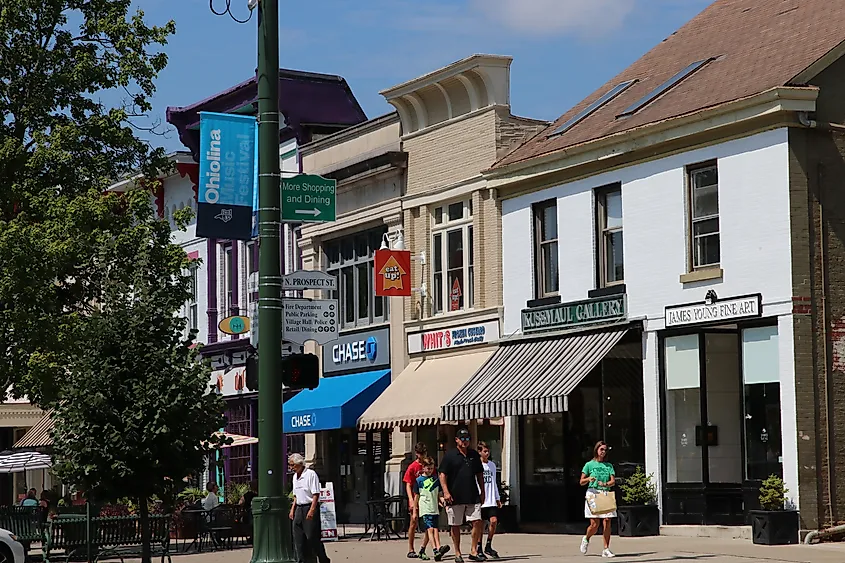
Granville sits on a gentle terrace above the Licking River and was founded in 1805 by settlers from Granville, Massachusetts, a singular fact visible in the town’s New England-style brick sidewalks and white steepled church. What truly stands out is the presence of Denison University, whose campus anchors the town and contributes art‑world resources, a historic chapel, and oak‑lined walkways. For retirees seeking a stable environment with cultural depth and familiar architectural patterns, Granville offers continuity and institutional support rather than rapid change.
Senior‑friendly amenities surround the town’s core. At River Road Coffeehouse on Broadway, patrons can enjoy window seating and scones, making it a convenient spot for slow mornings downtown. The Oak Room inside Granville Inn offers early reservations, quiet dining rooms, and straightforward classics on printed menus. For recreation, Spring Valley Nature Preserve features paved, low-grade loops, labeled trees, and benches, all within a short distance of Broadway.
Marietta
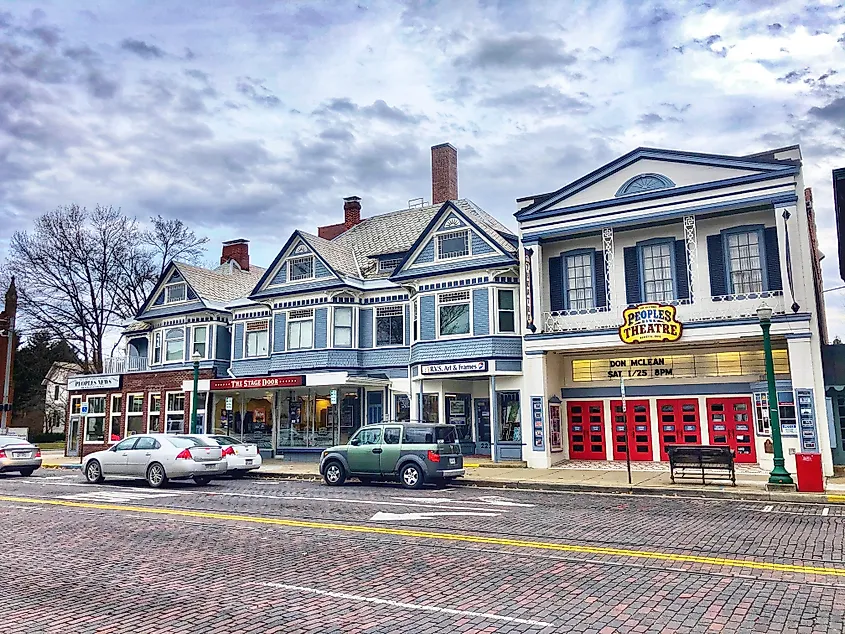
Marietta holds the distinction of being the first permanent settlement in the Northwest Territory since 1788, and its riverside location at the confluence of the Muskingum and Ohio Rivers remains central to the town’s identity. The presence of historic stone blockhouses and canal-era architecture provides retirees with tangible links to early American life. At the same time, the broad sidewalks and low-traffic downtown area make daily navigation manageable and unhurried. For seniors seeking a place that combines small-town charm with deep roots and stability, Marietta offers both.
Jeremiah’s Coffee House anchors Front Street with roomy morning seating, house roasts, and pastry cases that seniors can browse easily. At the breathtaking riverfront, Muskingum Park stands, offering paved walks, benches, and seasonal events, opposite the Lafayette Hotel. Dining at The Gun Room, located inside the Lafayette, offers river views, early seatings, and classic entrees in a historic dining room. The Campus Martius Museum, situated in a restored 1788 fortification, features level floors, guided exhibits on the westward expansion, and a quiet museum shop, making it accessible and engaging for older visitors seeking historic depth without high-intensity tourism.
Oberlin
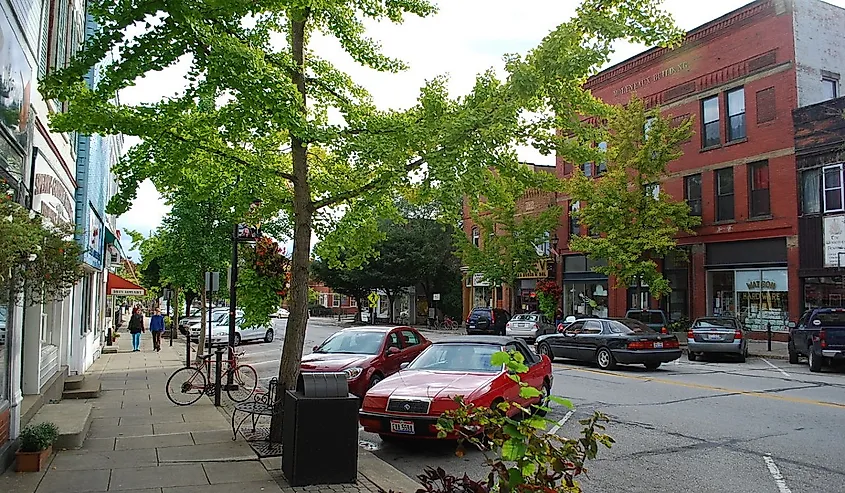
Oberlin stands out for its historic commitment to inclusive education. The town is home to Oberlin College, the first American institution to grant bachelor’s degrees to women and to African‑American students. That legacy is visible in the architecture of its campus, stone‑faced buildings, wide porches, and mature maples, and contributes to a stable civic atmosphere ideal for retirement. Seniors seeking a community with deeply rooted values, cultural depth, and a manageable size will find that Oberlin offers all three, with walkable streets and a university backdrop that supports long-term continuity rather than rapid change.
The Slow Train Cafe on South Main offers table service, pastries, and quieter afternoons near the Allen museum. The Allen Memorial Art Museum on campus features masterworks from across the continents in a single-floor layout with benches under natural light, allowing for relaxed pacing. Dinners at The Feve’s ground-floor dining room offer reliable comfort fare with booths and early dinner options on weekdays. For gentle outdoor activity, the Oberlin College Arboretum offers paved loops among labeled trees and shaded benches, quiet enough for reflection and firm enough for ease of movement.
Hudson
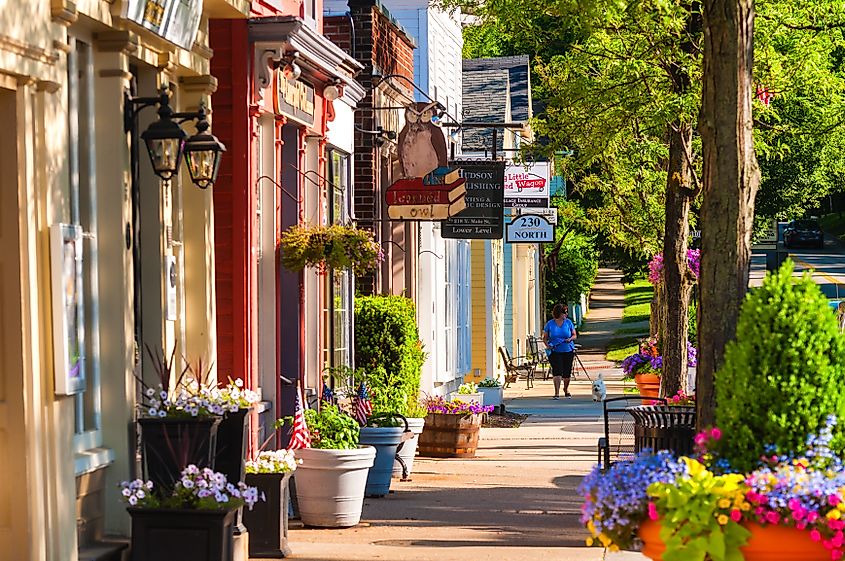
Hudson holds the distinction of being the first settlement plotted by the Connecticut Land Company in 1799, a fact still visible in its original village green surrounded by Greek Revival architecture and gas‑lit lamp posts. The town’s historic continuity and deliberate scale make it a strong retirement choice: compact enough for easy navigation, rich in architectural character, and rooted in deliberate planning rather than rapid expansion. Older residents benefit from streets designed for foot traffic, a downtown core that remains intact, and a community rhythm that’s steady and predictable.
Senior‑friendly amenities appear throughout Hudson. At Peace, Love & Little Donuts on Main Street, patrons enjoy early‑morning seating and counter service in a relaxed setting. The Hudson Library & Historical Society anchors community learning, exhibits local history, and hosts accessible programs. Hudson’s Restaurant, located on North Main Street, serves classic American comfort dishes, weekday lunch specials, reliable early evening seating, and accessible parking. Hudson Springs Park provides a paved lakeside path, benches facing the water and shaded picnic tables, features that support gentle outings without the traffic and hustle of larger parks.
Wooster
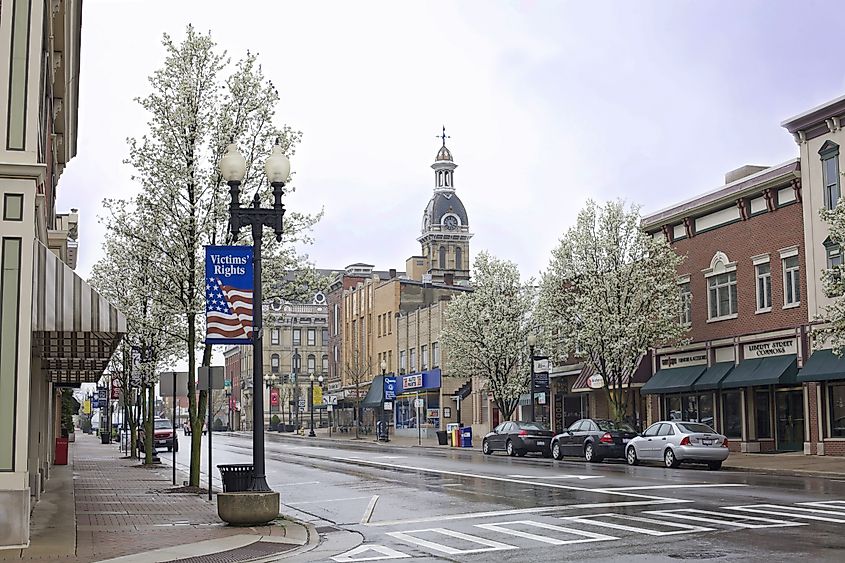
Wooster carries its agricultural pedigree in plain sight, home to the Ohio Agricultural Research and Development Center (OARDC) and the campus of The Ohio State University’s Wooster outpost. The town’s landscape blends research plots with Main Street storefronts. What stands out is the seamless integration of farmland and town, giving residents access to green science spaces and community services within easy reach. For retirees seeking a stable and intellectually engaging environment, Wooster offers both quiet continuity and institutional infrastructure, without the suburban sprawl.
In downtown Wooster, Sure House Coffee pours in-house roasts, offers ample seating, and sits one block from the Public Square downtown. At Secrest Arboretum on the OARDC campus, paved loop trails wind past labeled trees, benches beside a pond, and minimal elevation change, making them ideal for older walkers who prefer nature without steep grades. Dining at Broken Rocks Cafe provides early dinners, straightforward menus, and a quiet bakery counter on East Liberty Street. For cultural interest, the Wayne Center for the Arts showcases rotating exhibitions and craft fair weekends inside a single-floor gallery with bench seating and elevator access for easy movement.
Athens
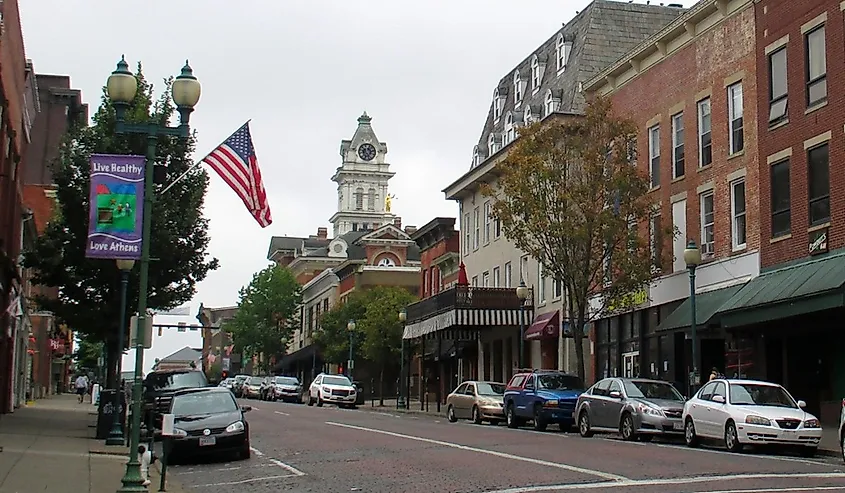
Athens was built into the hills above the Hocking River and carries the legacy of being home to Ohio University, the state’s oldest public institution of higher learning. What stands out is the physical setting, a compact town with 19th-century red brick streets, a central green flanked by university buildings, and wooded ridgelines visible in every direction. For retirees, the combination of walkability, academic programming, and access to healthcare through university-affiliated providers makes Athens an appealing long-term option.
At Donkey Coffee on Washington Street, seating includes accessible nooks for small groups, and the afternoon hours are quiet enough for reading or conversation. Strouds Run State Park, located just outside the center, offers Dow Lake’s paved edge trail, low-incline walking paths, and benches overlooking water that stays active with ducks, canoes, and shade. Union Street Diner serves breakfast and lunch daily with booths and printed menus at 70 West Union Street. For history and local culture, the Southeast Ohio History Center consolidates exhibits and archives in the former church building at 24 West State Street.
Medina
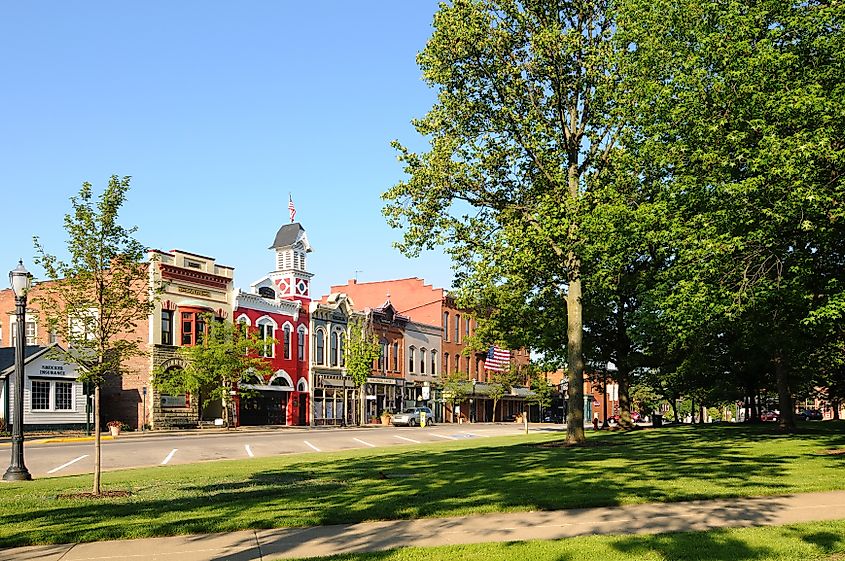
Medina centers its identity around a Victorian-era square that remains the town’s central hub. What stands out is the preserved 1870s courthouse and the still-operating bandstand, both of which are surrounded by a mix of independent businesses and civic buildings. The town has leveraged its historical strengths without becoming stagnant, making it a practical retirement destination. Walkable sidewalks, a low crime rate, and steady investment in civic amenities support senior living with minimal disruption and a clear sense of place.
Cool Beans Café on Public Square offers early counter service, ample seating, and a quiet atmosphere between the morning and lunch hours. At Reagan Park off Weymouth Road, seniors use the paved walking loop beside the fishing pond and shaded pavilions, with restrooms and benches spaced throughout the trail. For meals, Corkscrew Saloon on South Court Street serves lunch and dinner with printed menus and smaller-portion plates on request. The Medina County Historical Society’s John Smart House Museum, located two blocks from the square, offers guided tours through 19th-century rooms with level access, rotating exhibits, and monthly senior docent programs focused on local heritage rather than broad state history.
Perrysburg
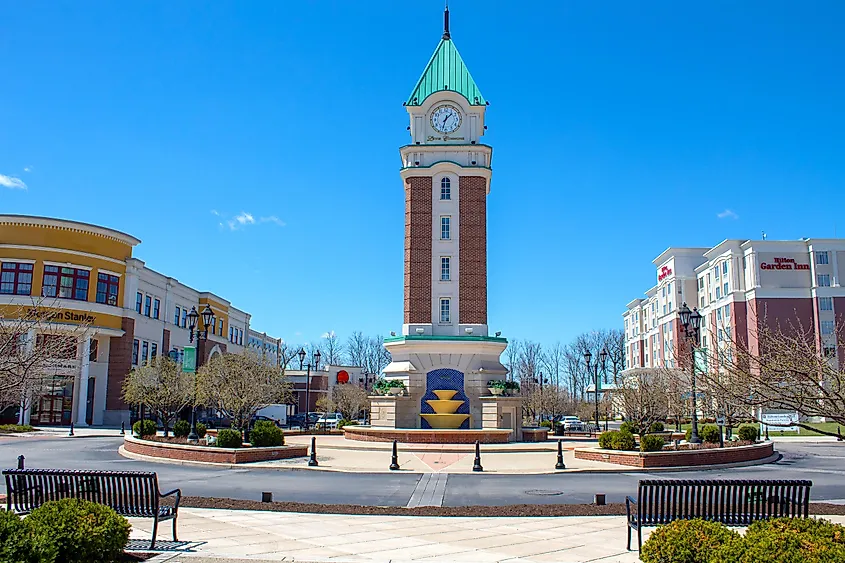
Perrysburg sits on the south bank of the Maumee River and traces its origins to the War of 1812, when Fort Meigs became the largest wooden fortification in North America. What stands out is the town’s balance between preserved riverfront history and modern civic layout. The downtown area is walkable, with streets lined by mature trees, and the infrastructure, including parks, sidewalks, and signage, is consistently maintained. For seniors, Perrysburg offers access to water views, stable property values, and quiet neighborhoods, making it a practical retirement choice rooted in routine.
The café Maddie & Bella Coffee Roasters on Louisiana Avenue serves brewed-to-order coffee and scones with ample table space and windows facing the square. Riverside Park, overlooking the Maumee, has paved walkways, iron benches, and flowerbeds maintained by city staff. Biaggi’s Ristorante Italiano at Levis Commons offers lunch and dinner with early seatings, large-print menus, and booth spacing that allows for quieter meals. Fort Meigs Historic Site, open year-round, provides interpretive trails, shaded rest areas, and mobility-friendly access to reconstructed barracks and blockhouses. Seniors with an interest in regional history can attend scheduled talks inside the visitor center, which features permanent exhibits and short documentary screenings.
Mount Vernon

Mount Vernon is defined by its location along the Kokosing River and its role as the seat of Knox County since 1808. What stands out is the city’s layout, which combines a preserved courthouse square with a network of parks, converted rail trails, and repurposed industrial buildings. The city’s scale and pace make it appealing to seniors looking for a manageable town with medical services nearby, a cohesive street plan, and a civic identity shaped by steady public investment rather than commercial expansion.
North Main Cafe roasts its own coffee and opens early, two blocks from the Public Square. Ariel-Foundation Park sits on the site of the former Pittsburgh Plate Glass works and offers paved walking loops around reflective pools, ruins, and a 250-foot tower visible from most of the city. The Knox County Historical Society Museum operates at 875 Harcourt Road with ground-floor galleries and scheduled afternoon hours. Across the river, the Kokosing Gap Trail begins just past Memorial Park, offering miles of flat, tree-lined path with benches spaced at regular intervals, suitable for morning walks or short bike rides on recumbent trikes.
Chagrin Falls
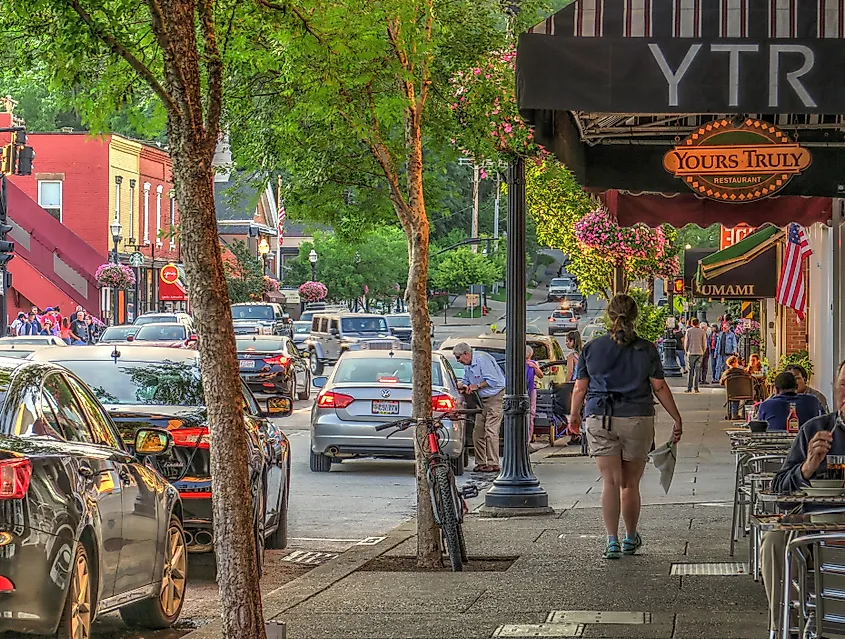
Chagrin Falls is built around the river-powered falls that gave the village its name, visible from the sidewalks of downtown and audible from open windows in nearby shops. What stands out is how the natural waterfall has remained central to daily life, not tucked away but integrated into the town’s street grid. Originally a milling village, Chagrin Falls has preserved not only the architecture of its founding period but also the habits of a self-contained, independent town. For seniors seeking compactness, familiarity, and continuity, the structure of Chagrin Falls delivers stability without isolation.
The Popcorn Shop on North Main Street overlooks the falls and offers counter service and park bench seating that attracts regulars before noon. Riverside Park, located just downstream, provides a paved loop, shaded seating, and seasonal programming that stays manageable in scale. Lemon Falls Café on Orange Street serves soups, paninis, and small-plate options for lunch, with indoor and covered patio seating suitable for slow meals. The Chagrin Falls Historical Society and Museum houses rotating exhibits in a former 19th-century residence, with ground-floor access and guided group tours available weekly. The quiet downtown blocks stay active but never crowded, making this town a retirement setting defined by walkability, water, and pace.
Ohio’s most comfortable towns don’t promise reinvention; they promise reliability. Greens, squares, riverwalks, rail-trails, and college galleries keep daily life close, legible, and calm. Benches face what matters, water, trees, storefronts, and errands stay short. Healthcare and services sit within a few turns, winter routes get cleared, and neighbors learn names quickly. In 2025, comfort looks like this map: eleven places where a day fits on foot and the future keeps familiar.



